Propagation and Myelin
Action Potential Propagation
Action potentials are initiated and propagated by the sequential activation of thousands of voltage-gated sodium (Na⁺) and potassium (K⁺) channels along the neuron’s membrane. This process can be studied using a technique called patch clamping, which allows us to measure ion flow through individual channels. When a channel opens, it depolarizes the local membrane, triggering adjacent channels to open.
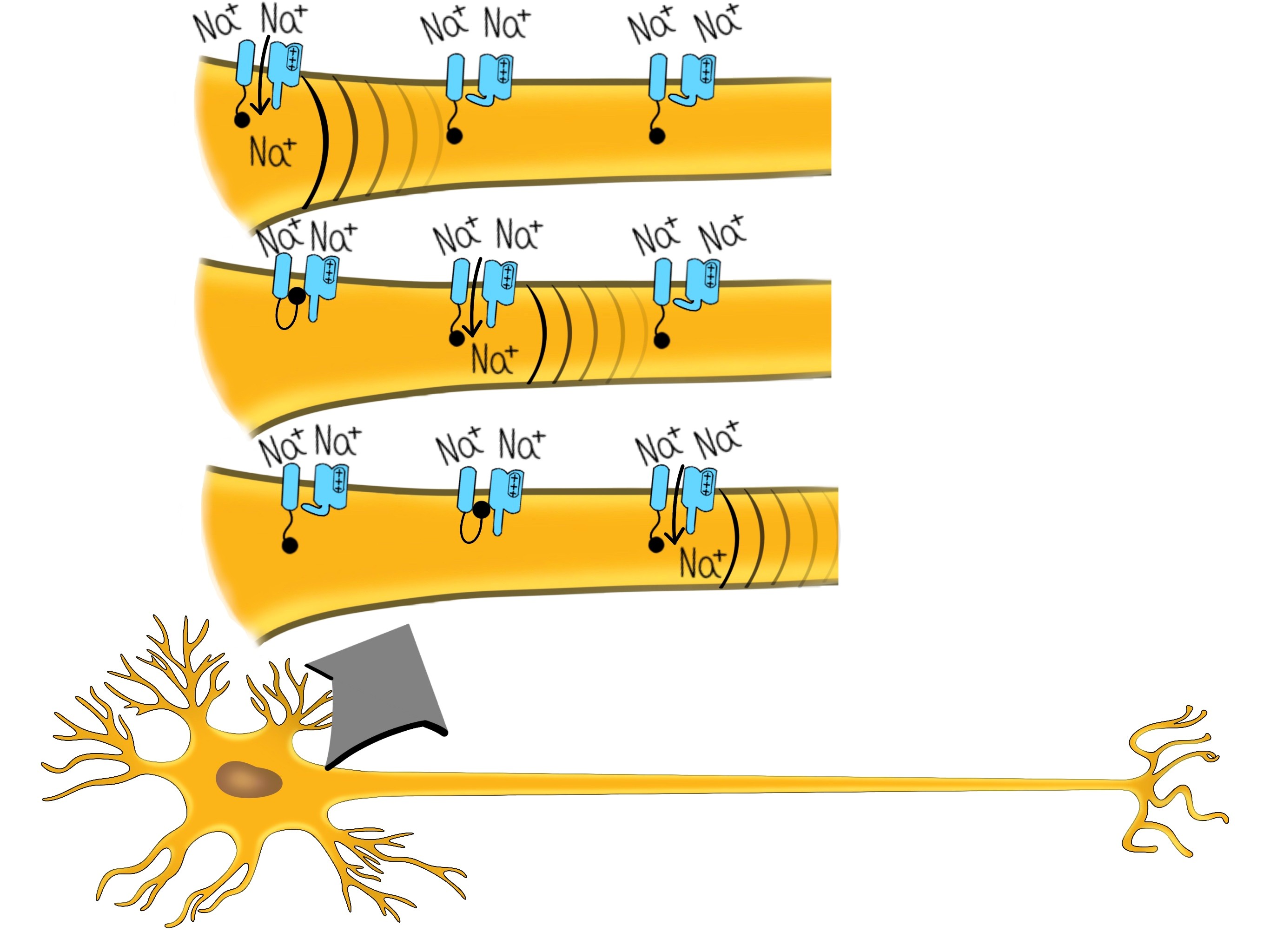
In the image above we see a magnified depiction of the axon. Action potentials in neurons generally start in an area of the axon adjacent to the cell body called the axon hillock. It is here that the first voltage gated sodium channels open to allow membrane depolarization. As sodium enters, it creates a positive charge influence in the axon that can influence other sodium gated sodium channels nearby (represented by the diminishing arcs in the image). Notice that the depolarization "wave" depolarizes voltage gated sodium channels further down the axon. The voltage gated sodium channel that was just open is not influenced because it is closed by the "ball" or inactivation gate. As long as the inactivation gate is closed, the neuron will not be able to depolarize again. This is called absolute refractory period.
Refractory Periods and Propagation
An essential concept in understanding action potentials is the refractory period, which defines the time during which a cell cannot immediately repeat an action potential.
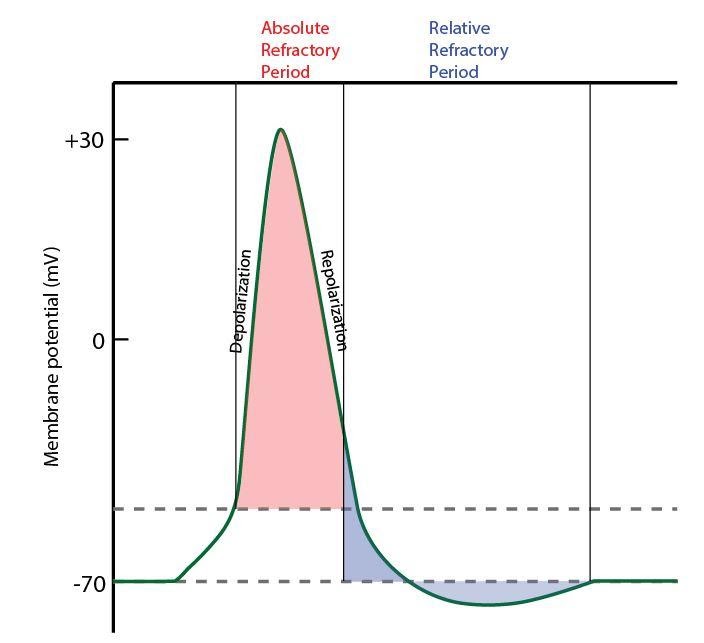
This period ensures that action potentials move in a single direction and prevents firing in the reverse direction that the action potential came from. The refractory period is divided into two phases:
-
Absolute Refractory Period: During this phase, no action potential can be initiated, regardless of the strength of the stimulus. This occurs because the inactivation gates of the voltage-gated Na⁺ channels are closed, rendering the channels unresponsive until they reset.
-
Relative Refractory Period: In this phase, it is possible to initiate another action potential, but only with a stronger-than-normal stimulus. This is possible because some of voltage-gated Na⁺ channels have begun to reset and can be recruited again.
The refractory period is a direct consequence of the behavior of Na⁺ channel gates. Once inactivated, these channels must reset their activation and inactivation gates before responding to another stimulus.
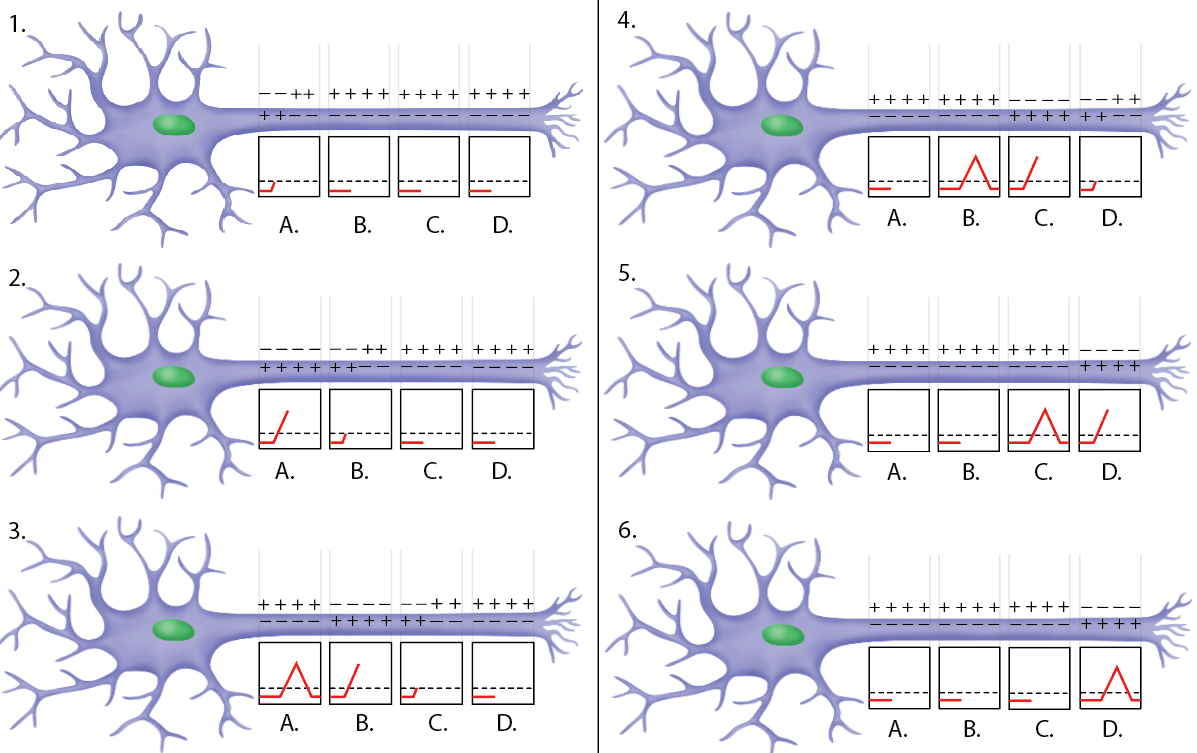
Notice in the image above that as a segment of axon becomes depolarized the segment just behind is in a refractory period and will not likely depolarize. The action potential "travels" in one direction. In unmyelinated axons, the depolarization caused by one channel is only strong enough to influence nearby channels due to the limited reach of its electric field (the positive charge influence mentioned above and depicted by the diminishing arches). In neurons that can extend up to a meter in length, waiting for each channel to activate sequentially can result in relatively slow signal transmission—about 35 mph. While this speed is sufficient for short distances, our nervous system requires faster signal transmission to ensure near-instantaneous reflexes.
Myelin
Imagine pulling your hand away from a hot stove; even a millisecond delay could result in a more severe burn. To increase the speed of action potential propagation, the nervous system uses an ingenious mechanism: concentrating ion channels at specific regions of the axon called nodes of Ranvier and insulating the regions between the nodes with myelin, a fatty substance produced by glial cells.
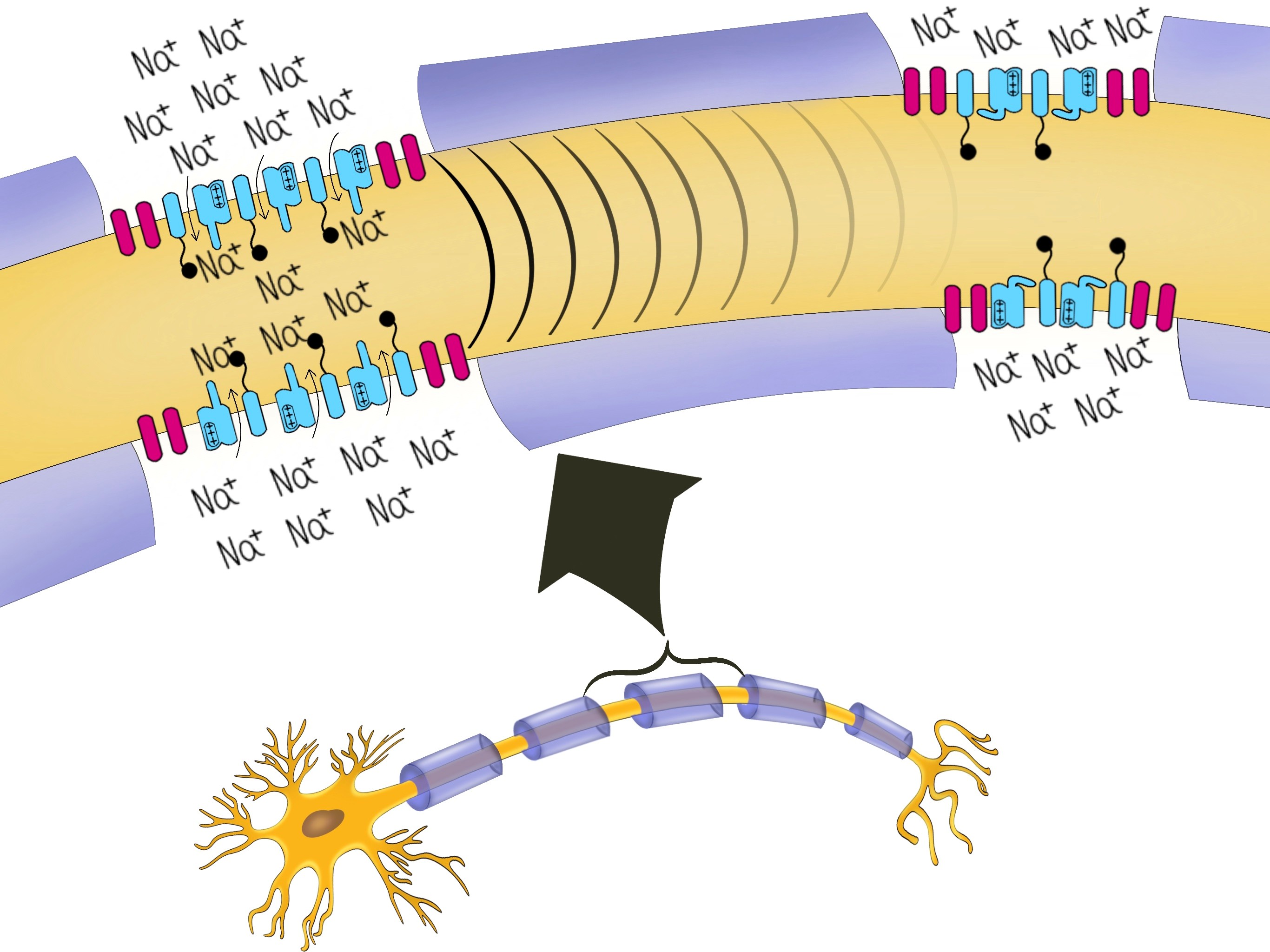
Myelin acts to enhance the effects of the electric field and allows it to travel much farther without interference. Please note that it is not the Na+ ion diffusing, but its electric field (positive charge influence) that is moving from one node of Ranvier to the next. A node of Ranvier is the junction without myelin that exists between two myelin segments. Two nodes of Ranvier are depicted in the image above. By insulating the axon, myelin reduces resistance and concentrates the depolarizing effect at the nodes, where clusters of Na⁺ and K⁺ channels are located. This process, known as saltatory conduction, allows the action potential to "jump" from node to node, with the electric fields easily moving through the myelinated sections of the axon. This reduces the number of channels that need to open, minimizing the energy and time required for ion flow. As a result, action potentials can travel at speeds up to 350 mph, ensuring rapid communication within the nervous system and enabling life-saving reflexes.
Multiple Sclerosis
Multiple Sclerosis (MS) is an autoimmune disease where the immune system begins to mistakenly attack Myelin of the central nervous system. Myelin is made of cells called oligodendrocytes in the central nervous system and when they begin to be attacked by the immune system, we can see segment disappear from the axons. If enough myelin is destroyed, the electric field created by depolarization at one node of Ranvier may not be able to travel far enough to depolarize voltage gated sodium channels at the next intact node of Ranvier. When this happens, action potential propagation may cease and never make it to the terminal end of a neuron. If this happens in a motor neuron, the muscles that it innervates will not receive a signal and paralysis will result. If it happens in a sensory neuron, the brain will not receive signals from the periphery and the there will be a lack of sensation and feeling of numbness. Notice that the neurons that extend beyond the spinal cord to the periphery are not myelinated by oligodendrocytes. Instead, peripheral neurons (both motor and sensory) are myelinated by Schwann cells which are a different population of cells and will not be attacked by the immune system in Multiple Sclerosis. Although the exact cause of MS remains unknown, it is notably twice as prevalent in women as in men.
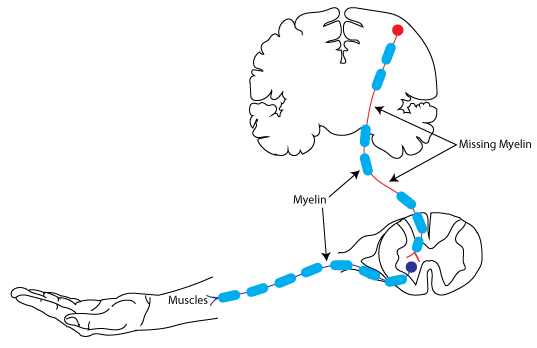
The image above shows missing myelin in a motor neuron of the central nervous system, but the motor neurons of the peripheral nervous system are still fully myelinated.
Let’s do a quick scenario to review some key concepts we have learned so far. Your fingertips contain at least five different types of touch receptors that allow you to feel various textures and pressures. But how do they work? Touch receptors are specialized neurons that exhibit the same phenomena we’ve discussed. At rest, these sensory neurons are permeable to K+ but not Na+, making the inside of the membrane negative relative to the outside (-70mV). As a result, voltage-gated Na+ channels remain closed. To sense touch, we need to convert the touch stimulus into an action potential. The mechanical stimulus of touch causes a conformational change in mechanically gated Na+ channels, opening them. As Na+ diffuses into the cell, the positive charges depolarize the membrane (graded potentials) to the threshold potential, which then opens voltage-gated Na+ channels and initiates an action potential. This action potential is propagated to the brain. via myelinated neurons, where it is perceived as touch. Interestingly, every external stimulus, whether taste molecules, light waves, sound waves, or mechanical touch, is converted into an action potential. Action potentials are the primary way the body communicates between tissues, and the brain functions by discerning and initiating these action potentials. These principles will be further explored in later chapters, so ensure you understand the basics of action potentials, electrophysiology, and membrane transport.